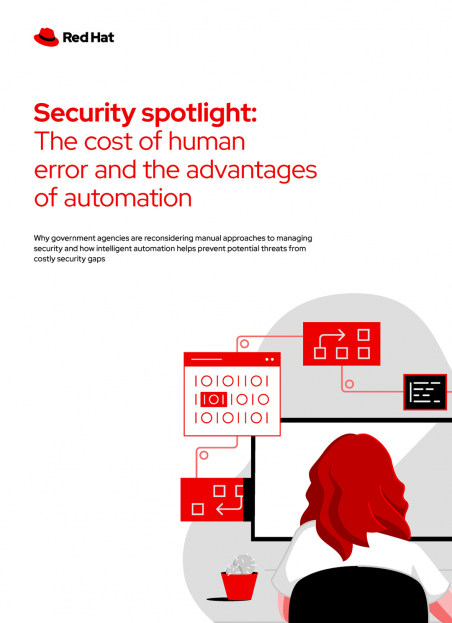

The cost of human error and the advantages of automation
Overview
Human error and a lack of awareness can compromise security, even when comprehensive strategies are already in place.
In this short e-book, you’ll learn how the risks introduced through human error affect the fight against cybercrime and how automating key cybersecurity strategies can strengthen your security and reduce burden on IT teams. You’ll explore:
- The growing threat and cost of cybercrime
- Common challenges of risk management
- How to strengthen your security posture with automation
- Red Hat solutions for building a future-ready cybersecurity practice
Excerpt
Humans make mistakes
Even within IT teams, people often underestimate or misunderstand their systems’ vulnerabilities and the resulting security risks. Our inability to accurately assess risk can result in significant costs to organizations.
For example, imagine this: A production outage occurs in a firewall, forcing a firewall engineer to manually update a policy under severe pressure. The change remedies the outage but also introduces a new attack vector that can be exploited by cybercriminals.
In this scenario, the manual, rushed firewall configuration change could result in various negative outcomes, including compromised data, violation of industry and government data security regulations, service interruptions, and system downtime—all at the organization’s expense.
From patching applications and updating firewalls to setting and enforcing administrative privileges, so many elements of the security puzzle can go wrong when handled manually. And as cybercriminals get better at identifying and exploiting vulnerabilities, relying solely on manual operations for these tasks can have detrimental or irrecoverable consequences.



